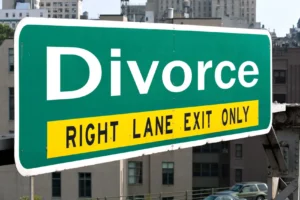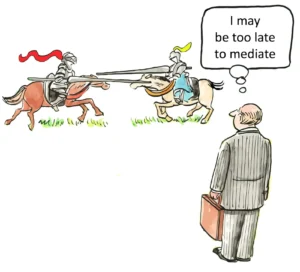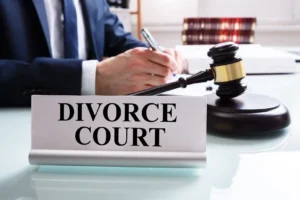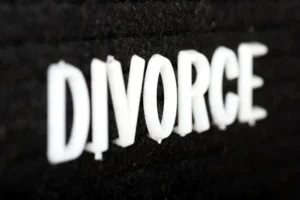Why Short-Form Videos Are Perfect for Lawyer Marketing
In today’s digital landscape, understanding why short-form videos are perfect for lawyer marketing has become essential for legal professionals seeking to expand their practice and connect with potential clients. The legal marketplace grows increasingly competitive with each passing day, and attorneys who fail to adapt their marketing strategies accordingly risk being overshadowed by more technologically savvy competitors. Video content has emerged as a particularly powerful tool, offering attorneys an unparalleled opportunity to demonstrate expertise, build trust, and convert prospects into clients in ways that traditional marketing methods simply cannot match.
The statistics supporting video’s effectiveness are compelling. According to recent data from the American Bar Association, only 24% of law firms currently utilize video as part of their marketing strategy. This represents a significant opportunity for attorneys willing to invest in this medium while many competitors lag behind. Videos are 53 times more likely to appear on the first page of search results compared to text-based content, providing law firms with enhanced visibility that translates directly to increased client acquisition opportunities.
The Strategic Value of Short-Form Video for Law Firms
The shift toward short-form video content in legal marketing reflects broader changes in consumer behavior. Modern clients conduct extensive research before selecting legal representation, often forming impressions based on digital content long before making contact. Short-form video content addresses this reality by providing a medium that is both informative and emotionally engaging.
For law firms seeking to expand their client base, short-form videos offer distinct advantages over traditional marketing methods. These brief, impactful videos—typically under 60 seconds—are designed to capture attention quickly and deliver key messages in a format that resonates with potential clients. This visual demonstration of knowledge and professionalism builds trust more effectively than written content alone. According to research, viewers retain 95% of a message when watching it in video format compared to just 10% when reading text—making complex legal concepts more accessible and memorable for potential clients.
The engagement metrics associated with short-form video content also significantly impact search engine rankings. These videos increase dwell time on websites, reduce bounce rates, and encourage social sharing—all factors that search engines interpret as indicators of valuable content. Law firms that strategically incorporate short-form videos into their digital presence can therefore expect improved visibility not only through the videos themselves but also through enhanced overall search performance.
Types of Short-Form Videos That Convert Prospects
Client Testimonial Videos
Client testimonial videos represent one of the most powerful tools in a law firm’s marketing arsenal. These authentic endorsements provide social proof that builds trust with potential clients by showcasing real people who have achieved favorable outcomes through your representation. The effectiveness of testimonial videos stems from fundamental aspects of human psychology—people naturally seek validation from others when making important decisions, particularly when selecting legal representation for significant personal or financial matters.
When creating short-form testimonial videos, focus on capturing the most impactful moments of a client’s story. In just 30-60 seconds, these micro-testimonials might highlight a specific outcome, an emotional reaction, or a particularly compelling statement about the firm’s impact. This concise approach aligns perfectly with the modern viewer’s limited attention span while still delivering powerful social proof.
It’s important to note that testimonial videos must comply with ethical guidelines established by state bar associations. Most jurisdictions require specific disclaimers stating that past results do not guarantee future outcomes and that testimonials represent individual experiences rather than typical results. Additionally, attorneys must obtain proper informed consent from clients before featuring them in videos, and this consent should be documented in writing with clear parameters about how the content will be used.
Educational Legal Content
Educational short-form videos that address common legal questions position your firm as a knowledgeable resource while building trust with potential clients. These videos demonstrate expertise without explicitly selling services, creating value that attracts prospects at the research stage of their decision-making process. The most effective educational videos address specific legal concerns that align with your practice areas, attracting qualified leads who are actively seeking information related to your services.
For instance, a personal injury attorney might create a 45-second video explaining what to do immediately after an accident, while an estate planning lawyer could address common misconceptions about wills and trusts in under a minute. This targeted approach attracts qualified leads who are actively seeking information related to your services. According to recent data, educational content consistently outperforms purely promotional material in terms of engagement and conversion rates.
When creating educational short-form content, strike a balance between demonstrating expertise and maintaining accessibility. Avoid excessive legal jargon that might alienate viewers, instead focusing on clear explanations that demonstrate your ability to make complex legal concepts understandable. This approach showcases both your knowledge and your communication skills—a combination that potential clients find particularly valuable.
Attorney Profile Videos
Attorney profile videos humanize your practice by introducing the professionals behind the firm. These personal introductions help potential clients connect with attorneys on a human level, addressing the common concern about working with impersonal legal entities. Effective short-form profile videos go beyond professional credentials to reveal the attorney‘s personality, values, and approach to client service.
While qualifications matter, clients often make decisions based on whether they feel comfortable with and trust their legal representative. Short-form profile videos that showcase both expertise and personal qualities help potential clients envision a productive working relationship. These videos should include elements that differentiate your practice from competitors, such as your unique approach to client service, your philosophy on legal representation, or why you chose to practice in your specific field.
The production quality of attorney profile videos significantly impacts their effectiveness. Professional lighting, clear audio, and appropriate settings create a positive impression that aligns with your firm’s brand. However, authenticity should always take precedence over production values—viewers respond more positively to genuine personality than to perfectly polished but inauthentic presentations, especially in the brief format of short-form videos.
Production Best Practices for Short-Form Legal Videos
Authenticity Over Perfection
In the context of legal video marketing, authenticity consistently outperforms technical perfection in building client trust. Today’s consumers have developed sophisticated filters for detecting inauthentic content, and legal clients in particular tend to be discerning and skeptical of overly polished presentations. Short-form videos that present genuine attorneys speaking naturally about their practice establish credibility more effectively than highly scripted or artificially formal productions.
This preference for authenticity does not mean abandoning professional standards. Rather, it suggests a balanced approach that maintains appropriate expertise and decorum while allowing the attorney’s genuine personality and passion to shine through. Minor verbal hesitations or natural speech patterns actually enhance credibility rather than detract from it, as they signal unscripted honesty rather than rehearsed performance. The goal is to create content that feels like a natural conversation rather than a commercial presentation, even within the brief timeframe of short-form videos.
For testimonial videos, this authentic approach becomes even more critical. Clients should never be provided with scripts or specific language, as this undermines the very credibility the testimonial aims to establish. Instead, prepare clients by discussing general topics they might address while emphasizing that you want their genuine thoughts and experiences. This preparation helps clients organize their thoughts while preserving the authenticity of their expression—the element that makes testimonials truly powerful in building trust with potential clients.
Technical Considerations
While authenticity takes precedence over technical perfection, certain production elements significantly impact how viewers perceive short-form video content. Poor audio quality, inadequate lighting, or distracting backgrounds can undermine even the most genuine message by creating a negative impression of the attorney’s professionalism or attention to detail. Investing in basic equipment and understanding fundamental production principles ensures that technical elements support rather than detract from your message.
Audio quality deserves particular attention, as viewers will tolerate imperfect visuals far more readily than poor sound. External microphones provide dramatically improved audio compared to built-in camera microphones, creating clearer, more professional results even with modest equipment. Similarly, basic lighting considerations—avoiding harsh shadows or backlit situations that obscure facial expressions—significantly enhance viewer connection and perception of trustworthiness.
Location selection also influences video effectiveness. Choose quiet, well-lit spaces with professional backgrounds that reflect your firm’s image without appearing sterile or impersonal. Remove distractions from the frame and ensure that the setting complements rather than competes with your message. For testimonials, consider filming in your office to reinforce the connection to your practice, while educational content might benefit from settings that convey authority and expertise, such as a conference room or professional library with relevant legal volumes visible but not prominent.
Ethical Compliance in Video Production
Attorney video marketing must navigate various professional rules to ensure compliance with ethical standards. Bar association regulations regarding attorney advertising vary by state and often include specific guidelines for video testimonials and claims about expertise or results. Most jurisdictions prohibit false or misleading statements in attorney advertising, including video content, with this restriction extending to implied claims and visual elements that might create unrealistic expectations about outcomes.
Many states require specific disclaimers for attorney advertising, particularly when discussing past results or client testimonials. These disclaimers typically state that past results do not guarantee future outcomes and that testimonials represent individual experiences rather than typical results. Ensure that these disclaimers are clearly visible and meet any specific requirements regarding size, duration, or placement. Consider having an ethics attorney review your testimonial videos before publication to ensure compliance with all applicable rules.
Client confidentiality represents another critical consideration when creating video content, particularly testimonials. Attorneys must obtain proper informed consent before featuring clients in videos, and this consent should be documented in writing with clear parameters about how the content will be used. Even with consent, attorneys should be careful not to disclose confidential information about client matters, including background elements, documents, or context that might inadvertently reveal protected information. For practice areas involving particularly sensitive matters, consider alternative approaches to testimonials, such as actors recreating scenarios with fictional details (clearly labeled as dramatizations) or former clients discussing their experience in general terms without specific case information.
Strategic Implementation of Short-Form Videos
Platform-Specific Optimization
Each social media platform has unique requirements and audience expectations for short-form video content. Understanding these differences allows law firms to optimize their videos for maximum impact across various channels. For instance, TikTok and Instagram Reels favor vertical videos with dynamic pacing and trending audio, while LinkedIn audiences respond better to more professional, educational content even in short formats.
Instagram Reels and TikTok typically limit videos to 60 seconds or less, making them ideal for quick legal tips, brief client testimonial highlights, or attorney introductions. These platforms prioritize entertaining, authentic content that captures attention immediately. YouTube Shorts offers slightly more flexibility with videos up to 60 seconds, allowing for more detailed explanations of legal concepts while still maintaining the brief, engaging format that characterizes short-form content.
When creating platform-specific content, consider how each platform’s unique features can enhance your message. For example, TikTok and Instagram Reels offer text overlays, effects, and music options that can make educational content more engaging, while LinkedIn’s professional audience might respond better to straightforward delivery with minimal effects but strong informational value. This tailored approach ensures that your short-form videos resonate with the specific audience on each platform.
Integration with Broader Marketing Strategy
Short-form videos should not exist in isolation but rather as part of a cohesive marketing strategy that includes various content types and channels. These brief videos can serve as entry points that drive viewers to more detailed content on your website, such as longer explainer videos, blog posts, or consultation requests. This strategic integration maximizes the impact of your short-form content by creating clear pathways to conversion.
Consider creating series of related short-form videos that address different aspects of a legal topic, with each video directing viewers to the next in the series or to a comprehensive resource on your website. For example, a personal injury firm might create a series of 30-second videos covering different aspects of car accident claims, with each video building on the previous one and ultimately directing viewers to a landing page with more detailed information and a consultation offer.
Email marketing campaigns can incorporate short-form videos to increase engagement and click-through rates. Including video thumbnails in emails has been shown to increase click-through rates by up to 300%, making this an essential strategy for law firm marketing. These brief videos can introduce new content, highlight client success stories, or provide quick legal tips that demonstrate your expertise while encouraging recipients to visit your website for more information.
Measuring Success and Optimization
Implementing effective tracking mechanisms allows law firms to measure the impact of their short-form video content and calculate return on investment. Key performance indicators for legal videos include view counts, engagement metrics (such as watch time, likes, shares, and comments), and conversion actions (like contact form submissions or consultation requests). Track these metrics consistently over time to identify trends and patterns that inform your video strategy.
Pay particular attention to differences in performance between video types, topics, and distribution channels. These insights help allocate resources to the most effective content and platforms. For instance, you might discover that testimonial videos drive more consultations from TikTok, while educational content performs better on LinkedIn for certain practice areas. This granular understanding allows for targeted optimization of both content and distribution strategies.
Beyond basic metrics, implement attribution tracking to connect video views to actual client acquisitions. By using proper tracking codes and conversion paths, you can identify which videos most effectively convert viewers into clients. This data enables you to refine your approach based on what resonates most strongly with your target audience. Many law firms use customer relationship management (CRM) systems to track how leads from video content progress through the client acquisition funnel.
Benefits of Short-Form Videos for Law Firms
Increased Engagement and Reach
Short-form videos align perfectly with modern attention spans and consumption habits. According to Microsoft research, the average human attention span has dropped to just 8 seconds, making brief, impactful content more effective than longer formats for capturing and maintaining viewer interest. This alignment with audience preferences results in higher engagement rates, with short-form videos receiving 2.5 times more engagement than their long-form counterparts.
The shareable nature of short-form videos significantly extends their reach beyond your immediate audience. When viewers find content valuable, entertaining, or informative, they’re more likely to share it with their networks, creating organic distribution that expands your firm’s visibility. This viral potential—acknowledged by 47% of marketers as a key advantage of short-form videos—allows law firms to reach potential clients who might not otherwise encounter their content.
Social media algorithms also favor short-form video content, prioritizing it in users’ feeds to increase platform engagement. This algorithmic preference provides an additional visibility boost for law firms utilizing this format, potentially reaching larger audiences with less investment in paid promotion. As these platforms continue to emphasize video content, firms that master short-form video creation gain a significant competitive advantage in the digital marketplace.
Simplified Complex Legal Concepts
The legal field is notorious for its complex terminology and concepts, which can intimidate potential clients and create barriers to engagement. Short-form videos excel at breaking down these complexities into accessible, easily understood explanations that demystify legal processes and build confidence in viewers considering legal services.
By focusing on a single concept, question, or tip in each short-form video, attorneys can provide clear, concise explanations without overwhelming viewers with information. This targeted approach makes complex legal topics more digestible and helps potential clients understand how legal services might address their specific situations. For example, a 45-second video explaining “What constitutes workplace discrimination?” can provide valuable information while positioning your firm as a knowledgeable resource in employment law.
The visual nature of video allows for creative explanations that further enhance understanding. Simple graphics, text overlays, or visual demonstrations can illustrate concepts that might be difficult to grasp through text alone. This multi-sensory approach to information delivery improves comprehension and retention, making your educational content more effective at building trust and encouraging potential clients to seek your services.
Cost-Effective Production
Short-form videos typically require less production time, equipment, and resources than longer formats, making them an accessible marketing tool for law firms of all sizes. With just a smartphone, basic lighting, and simple editing software, attorneys can create professional-looking short-form videos that effectively communicate their message and build their brand.
The brief format also reduces the pressure for perfection that often accompanies video production. Since short-form videos focus on delivering a single, concise message rather than comprehensive coverage of a topic, they can be created more quickly and with fewer retakes than longer content. This efficiency allows law firms to produce more content with the same resources, creating a consistent presence across platforms that reinforces brand recognition.
Many law firms find that batching production—creating multiple short-form videos in a single session—further improves efficiency and ensures consistent quality. For example, an attorney might set aside a few hours to record 10-15 brief videos addressing common client questions, providing content that can be released over several weeks or months. This approach maximizes the return on production investments while maintaining a regular content schedule that keeps your firm visible to potential clients.
Overcoming Common Challenges
Finding the Right Content Balance
One of the primary challenges in creating effective short-form legal videos involves balancing informational value with brevity. Attorneys accustomed to detailed explanations and comprehensive analysis may struggle to distill their knowledge into 30-60 second segments without sacrificing substance or accuracy. This challenge requires a shift in perspective from comprehensive coverage to focused, high-impact messaging.
Successful short-form legal content typically addresses a single, specific question or concept rather than attempting to cover broader topics. For example, instead of creating a video about “divorce law,” focus on specific aspects like “How are retirement accounts divided in divorce?” or “What factors determine alimony in our state?” This targeted approach allows for meaningful content within the brief format while still providing value to viewers.
Consider creating series of related short-form videos that collectively address a broader topic while individually remaining focused and concise. This approach allows for more comprehensive coverage while maintaining the engagement advantages of the short-form format. Each video should stand alone as valuable content while also directing viewers to related videos in the series, creating a pathway for deeper engagement with your firm’s expertise.
Maintaining Professional Image
Some attorneys express concern that short-form videos, particularly on platforms like TikTok or Instagram Reels, might undermine their professional image or trivialize serious legal matters. This concern reflects a legitimate consideration about brand positioning and client perception, particularly for firms serving corporate clients or practicing in more traditional legal areas.
The key to addressing this challenge lies in adapting the format while maintaining professional standards appropriate for your practice area and target clients. Short-form videos need not incorporate trending dances or memes to be effective—they can maintain a professional tone while still utilizing the brief, engaging format that characterizes successful short-form content. Focus on creating informative, valuable content that reflects your firm’s brand voice and professional standards.
Platform selection also plays a critical role in maintaining your professional image. While TikTok might be appropriate for firms targeting younger clients or practicing in areas like family law or personal injury, LinkedIn or YouTube Shorts might better serve firms focused on corporate law or estate planning. Consider where your ideal clients spend their time online and focus your short-form video efforts on those platforms, adapting your content approach to match platform expectations while maintaining your professional standards.
Ethical Compliance Across Platforms
Navigating ethical compliance across various social media platforms presents another significant challenge for law firms creating short-form video content. Each platform has different capabilities for including disclaimers, disclosures, or other required elements, and the brief format of short-form videos can make it difficult to incorporate these necessary components without sacrificing valuable content time.
To address this challenge, develop platform-specific strategies for ethical compliance that work within each channel’s constraints. For example, on TikTok or Instagram Reels, you might include brief text overlays with required disclaimers, while on YouTube Shorts, you could utilize the description field for more detailed disclosures. Some firms create standardized opening or closing frames that include necessary disclaimers, ensuring consistent compliance across all short-form content.
Consider consulting with an ethics attorney familiar with digital marketing regulations in your jurisdiction to develop compliant templates for different platforms and content types. This proactive approach ensures that your short-form video strategy can scale without creating compliance risks. Remember that ethical requirements vary by jurisdiction, so multi-state practices may need to adhere to the most stringent applicable standards or create location-specific content.
Future Trends in Short-Form Legal Video
AI and Personalization
Artificial intelligence is transforming how law firms create and distribute short-form video content. AI-powered analytics can identify which video elements resonate most strongly with specific audience segments, enabling more targeted and effective distribution. These insights allow firms to match particular content types or topics with the prospects most likely to find them relevant and compelling, increasing conversion rates through enhanced relevance.
Personalized video experiences represent an emerging trend with significant potential for legal marketing. Advanced systems can dynamically assemble short-form content based on viewer characteristics or behavior, creating more relevant viewing experiences. For instance, a potential client researching divorce services might automatically see testimonials from similar demographic groups or situations, increasing the content’s impact through heightened relevance and personal connection.
AI-enhanced production tools are streamlining the creation process for legal videos. Automated editing systems can identify the most compelling segments from longer interviews, suggest optimal cuts, and even generate initial edits based on emotional analysis and engagement patterns. These tools reduce production time and costs while potentially improving the effectiveness of the final product, making sophisticated video marketing more accessible to firms with limited resources.
Interactive Short-Form Videos
Interactive technologies are creating new possibilities for engaging potential clients through short-form video content. These advanced formats allow viewers to choose their own path through content, selecting the aspects most relevant to their specific situation. For example, a brief video explaining different practice areas might allow viewers to tap or click for more detailed information on specific services, creating a personalized experience that addresses their particular legal concerns.
Interactive elements such as polls, quizzes, and clickable hotspots transform passive viewing into active engagement. These features not only improve the viewer experience but also provide valuable data about viewer interests and concerns. By tracking which options viewers select, firms gain insights into potential client priorities and information needs, informing both content strategy and service development.
The integration of direct response mechanisms within short-form videos represents another emerging trend. These features allow viewers to schedule consultations, download resources, or contact the firm directly from within the video player, reducing friction in the client acquisition process. As platform capabilities continue to evolve, these seamless conversion pathways will become increasingly sophisticated, potentially improving conversion rates from short-form video content.
Platform Evolution and Adaptation
The landscape of short-form video platforms continues to evolve rapidly, with new features, formats, and platforms emerging regularly. Law firms must stay informed about these changes and adapt their strategies accordingly to maintain effectiveness. For instance, as platforms extend maximum video lengths or introduce new interactive features, content approaches that leverage these capabilities can provide competitive advantages.
Vertical video formats have become the standard for short-form content, reflecting the predominance of mobile viewing. This shift requires law firms to rethink traditional horizontal video production and embrace vertical framing that maximizes screen real estate on mobile devices. As this trend continues, firms that master vertical storytelling techniques will achieve better engagement and conversion rates from their short-form content.
The integration of short-form video into new contexts represents another important trend. From video-based search results to embedded content in virtual and augmented reality experiences, the applications for brief, informative legal videos continue to expand. Forward-thinking law firms should monitor these developments and experiment with emerging platforms and contexts that align with their target client demographics and practice areas.
Conclusion
The strategic value of short-form videos for law firm marketing cannot be overstated in today’s digital environment. These brief, engaging videos align perfectly with modern attention spans and consumption habits, offering attorneys an unparalleled opportunity to connect with potential clients, demonstrate expertise, and build trust in ways that traditional marketing methods simply cannot match. As video continues to dominate online content consumption, law firms that master the art of short-form video creation gain a significant competitive advantage in client acquisition and retention.
The multifaceted benefits of short-form legal videos extend beyond immediate marketing impact. These videos improve search engine visibility, enhance website engagement metrics, provide versatile content for multiple platforms, and deliver measurable returns on investment. When properly executed with attention to legal and ethical considerations, short-form video content creates a virtuous cycle of trust-building that supports sustainable practice growth.
As we look toward the future of legal marketing, the evolution of short-form video will likely accelerate through technological innovation and changing consumer preferences. Firms that embrace these changes—adapting to new formats, leveraging emerging technologies, and maintaining an unwavering commitment to authentic communication—will continue to realize the full potential of this powerful marketing tool. In an industry built on trust and reputation, there are few more effective ways to demonstrate your firm’s value than through compelling short-form videos that showcase both your expertise and your commitment to client success.




















